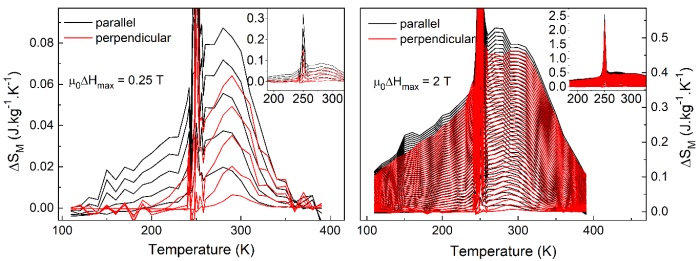Speaker
Description
Magnetic refrigeration is a non-conventional cooling method providing environmentally friendly and more efficient cooling. One of the main advantages of magnetocaloric cooling is the scalability of the used material to the required application. On the other hand, decreasing the size will naturally cause a reduction of cooling power which may be solved by using higher magnetic field changes. Such a solution brings even more disadvantages – high energy consumption. In this work, we would like to present different methods how to deal with high energy consumption employing shape anisotropy of the microwire sample. Microwire’s fabrication process immediately provides strong shape anisotropy of the material with an easy magnetisation axis in the microwire's axis and a hard magnetisation axis perpendicular to the microwire. Indirect magnetic measurements were employed to study the magnetocaloric effect of Heusler glass-coated microwire Ni$_{53}$Fe$_{20}$Ga$_{27}$. The rotation of the sample does not have a significant influence on the magnetocaloric effect in high magnetic field changes. However, observed behaviour in low magnetic field changes opens new possibilities on how to utilise magnetocaloric cooling in real applications, since the magnetocaloric effect measured in the hard axis is negligible compared to the magnetocaloric effect of the sample placed in parallel with the applied magnetic field. This opens the possibility of using the sample's rotation in a low static magnetic field for cooling.

Fig. 1 Comparison of magnetocaloric effect in low (left) and high (right) magnetic field change for studied microwire in parallel and perpendicular position with respect to the applied magnetic field.
Acknowledgements
This work was supported by the projects APVV-16-0079 and VEGA 1/0180/23 and vvgs-2024-3079.
References
[1] M. Hennel, L. Galdun, A. Džubinská et al. “High efficiency direct magnetocaloric effect in Heusler Ni2MnGa microwire at low magnetic fields,” Journal of Alloys and Compounds, vol. 960, 170621, 2023. doi: 10.1016/j.jallcom.2023.170621.
[2] M. Orendáč, S. Gabáni, E. Gažo et al. “Rotating magnetocaloric effect and unusual magnetic features in metallic strongly anisotropic geometrically frustrated TmB4,” Scientific Reports, vol. 8, 10933, 2018. doi: 10.1038/s41598-018-29399-2.

